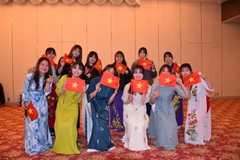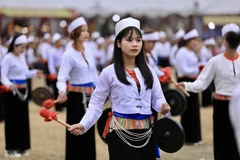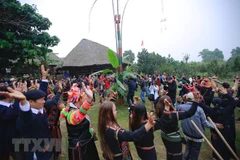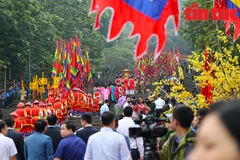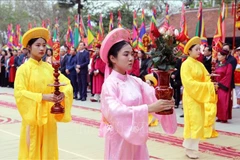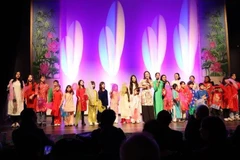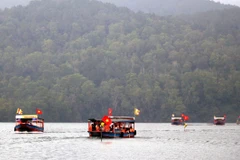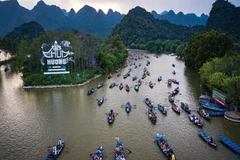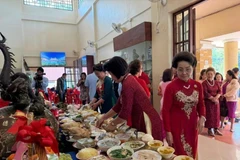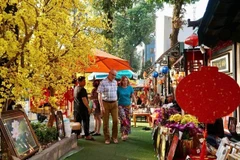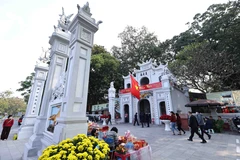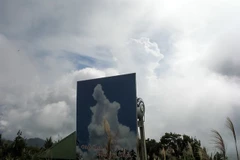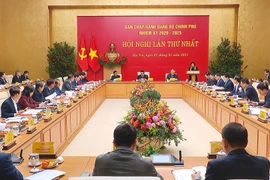Kinh Thien Palace is a main building in the central sector of the ThangLong imperial citadel, which is located in Hoang Dieu street. It sits inthe centre of the complex, facing Doan Mon (south gate) and Flag Tower.
The palace, which was built in 1428, was believed to be the most important building, hosting many royal ceremonies.
The palace, however, was almost destroyed at the end of the 19thcentury by the French, and what remains today are a 100 cm-high banisterto the south and large stone steps carved with dragons.
"We are touching an elephant and do not know its whole body," he toldViet Nam News, "Our findings on layers of Ly, Tran and Le dynasties areonly small pieces of the story. The area that has been excavated is toosmall to explain the entire old royal capital."
Scientists have excavated two holes of 100sq.m and found continuouslayers from the Dai La citadel (8th-9th centuries), Ly (1009-1225), Tran(1225-1400), Le (1428-1527) and Nguyen (1802-1945) dynasties.
Tin said it might take one to two centuries to explore the entireroyal citadel relic site, and it might require 60 years to justthoroughly understand the central area, he said.
Scientists participating in the workshop shared the same opinion aboutsetting up more short and long-term research studies at the site.
"We should plan a continuous study to take many years, not just one or two years," said Prof Han Van Khan.
According to the report by the institute, which conducted theexcavations throughout this year, a trace of the building's foundationand tiled court yard dated to the Ly dynasty, which was discovered forthe first time. Many scientists believe this was a remnant of a yardwhich was used for royal meetings.
A water drainagepipe dating to the Tran dynasty has also been unearthed, with a width ofnearly 50cm, depth of 1.5m and length of 16m.
The drainage system was built in brick and runs east-west, then turns to the north.
The entire original foundation of the Kinh Thien Palace, which wasbuilt during the Le dynasty, has been defined as a square structure witha total measurement of 1ha, as each side measures around 125m long.
There are some traces of building dating back to the Ly and Trandynasties in the same area, which made scientists believe that thepalace was also used as an administration area.
Deputy culture minister Dang Bich Lien has asked the institute to make adetailed archaeology excavation plan to explore the remnants of ThangLong citadel during a five year period and to seek assistance from otheragencies.
"Many people proposed rebuilding the KinhThien Palace from the present traces," Tin said, "But with theastonishing excavation results, I think we should wait for a long timeto try to understand the entire area before doing that."
He gave the example of the Nara citadel in Japan, which also experienced a 50-year-research period before being rebuilt.
The Thang Long Imperial Citadel was built in the 11th century by theLy dynasty, marking the independence of the Dai Viet. The central sectorof the imperial citadel was listed in UNESCO's World Heritage Site onJuly 31, 2010.-VNA
